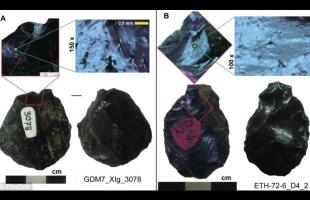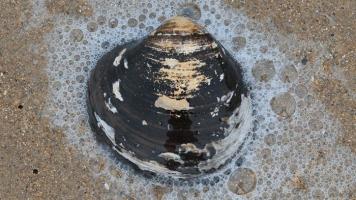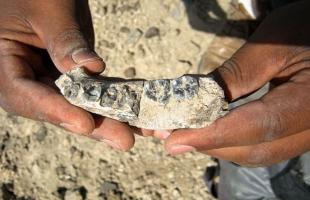Copy Link
Add to Bookmark
Report
Cider Digest #1297

Subject: Cider Digest #1297, 4 February 2006
From: cider-request@talisman.com
Cider Digest #1297 4 February 2006
Forum for Discussion of Cider Issues
Dick Dunn, Digest Janitor
Contents:
More carbonation questions (Donald Davenport)
Re: distillation equipment and literature (Lee Passey)
grundies, cornies, pressure, carbonating (Dick Dunn)
Grundy tanks ("David Lee")
a little more on nutrient management (Dick Dunn)
Send ONLY articles for the digest to cider@talisman.com.
Use cider-request@talisman.com for subscribe/unsubscribe/admin requests.
When subscribing, please include your name and a good address in the
message body unless you're sure your mailer generates them.
Archives of the Digest are available at www.talisman.com/cider
----------------------------------------------------------------------
Subject: More carbonation questions
From: Donald Davenport <djdavenport@earthlink.net>
Date: Sun, 29 Jan 2006 12:18:49 -0700
Ray Blockley wrote:
> However, if you want to go 'the whole hog' and end up with seriously
> fizzy Champagne-style cider, then your target is a gas pressure of about
> 4 atmospheres (55psi (uk-style psi!)). Adding 15 - 16 grammes per litre
> will give you this pressure (about 70 grammes per "Imperial" UK gallon)
If, as you mention, a SG of 1.005 will give some bubbles and fizz.
What target gravity should one be looking for in the "whole hog" realm
of seriously fizzy 4 atmosphere cider?
1.010?
> Make sure the Champagne yeast is working; a dried yeast
> just 'bunged in' may stay dormant, being inhibited by the already
> present alcohol.
Is a "working" yeast one that has simply been successfully re-hydrated?
Or does it need to be prodded a bit more before being pitched?
Thanks.
Don Davenport
------------------------------
Subject: Re: distillation equipment and literature
From: Lee Passey <lee@novomail.net>
Date: Sun, 29 Jan 2006 19:04:07 -0700
pete elderkin <elderkinsapples@accesswave.ca>wrote:
> Subject: distillation equipment and literature
> From: elderkinsapples <elderkinsapples@accesswave.ca>
> Date: Sun, 22 Jan 2006 16:31:34 -0400
>
> dick
> does anyone have information or literature equipment on cider or mash
> distilation.
> pete elderkin
>
A brief discussion on how to make apple brandy can be found in Annie
Proulx & Lew Nicols' book "Cider: Making, using & enjoying sweet & hard
cider", (Storey Publishing, 2003, www.storey.com).
For the brave, and perhaps foolhardy, see http://www.amazingstill.com/.
------------------------------
Subject: grundies, cornies, pressure, carbonating
From: Dick Dunn <rcd@talisman.com>
Date: Mon, 30 Jan 2006 12:02:38 -0700
Terry Bradshaw wondered if John Brett was asking about corny kegs. I can't
guess whether he was, but a corny and a grundy are two very different
animals. Corny (short for Cornelius, main manufacturer) kegs are, as Terry
says, normally 5 US gallon. They'll take a lot of pressure. The rating
for actual Cornelius brand "Super Champion" (probably the most common) is
130 psi. Staying well below that for safety still allows for way more
pressure than you could use in practice. US beer kegs are rated for less
pressure, but still a lot.
You can carbonate easily enough at 10 psi if you chill and if you're not
trying to build up soda-style carbonation. (You can dissolve more CO2 in
a colder liquid.) Folks seem to aim at more like 25 psi, which gets it
done quicker but also makes it easier to over-carbonate.
Grundies are (relatively) large commercial tanks that aren't meant to be
moved around while in use. The typical size seems to run from 3-7 bbl
(US "beer" barrels == 31 US gallons or 117 liters), or in rough numbers
100-200 gallons or 350-800 liters.
Now, on the the matter of grundies and pressure, Charles McGonegal
mentioned:
> Watch 'grundies' - the fine print says they aren't pressure capable...
It's all kinda goofy, though. If you -look- at a grundy, it's obvious
it was designed for some amount of pressure. And the purpose is to be
able to work with some above-atmospheric level of CO2 pressure; that's
quite simply how they're used. And while I haven't made a thorough study,
the real Grundy (a manufacturer's name) tanks seem to have a ratings plate
giving both a "maximum pressure" and a "working pressure". Strange
characteristics for a vessel not pressure-capable! BUT Charles's statement
about the fine print is also correct.
so...pressure ratings on a non-pressure-capable vessel?
Is this some sort of regulatory dodge? I could imagine that if you called
it a "pressure vessel" it would be subject to a lot more regulations, and
you'd have to get it installed by a member of the boilermaker's union, and
have it inspected annually, and ...
So perhaps with a working pressure of 30 psig (200 KPa or a couple atm),
it's low enough to declare it a non-pressure vessel for regulatory
purposes? Don't know.
- --
Dick Dunn rcd@talisman.com Hygiene, Colorado USA
------------------------------
Subject: Grundy tanks
From: "David Lee" <dave@dleeco.com>
Date: Mon, 30 Jan 2006 16:12:52 -0500
This is a multi-part message in MIME format.
To find out what a Grundy tank was, I put that into Google. There were
several sites that came up offering brewery and winery equipment. Check
out http://www.ripleystainless.com The information from Mr.. Bradshaw
on Corny kegs was most useful. Dave Lee
------------------------------
Subject: a little more on nutrient management
From: Dick Dunn <rcd@talisman.com>
Date: Fri, 3 Feb 2006 11:41:12 -0700
Looking back over comments on nutrient management in cider, first about
nitrogen...
I think Terry Bradshaw's comments in digest 1294, noting his experiences
with fruit from various sources, really covers the issue. I shouldn't have
said that commercial orchards for dessert fruit are over-fertilized,
because sure, they're fertilized only as much as needed to produce the
size and character of fruit in demand in the marketplace. Also, loading up
on nitrogen normally produces a lot of leaf growth, which isn't going to
help the fruit ripen. Still, it does seem that commercial fruit is high
enough in nitrogen to make a difference in fermentation, and as Terry
pointed out, the bottom line is:
>...But we are talking about optimum fertility for /cider/ fruit here,
That's a different ball game.
Terry mentioned tests on leaf nitrogen, which is the normal approach. But
is anybody doing, or set up to do, tests on fruit nitrogen levels?
Mike Beck asked what's considered "slow" or "fast" fermentation, and
commented that his fermentations were lasting 6-7 weeks, fermenting fairly
cool (around 50 F). I'd like to hear views of others, but I'd say Mike is
in the mid-range but toward the shorter end of it. It's certainly not the
couple-weeks-or-less time that a large commercial operator would want. But
I think it's common for folks here to be talking about months rather than
weeks of fermentation. One of the old descriptions we hear often is that
cider would ferment slowly over the winter and picks up again when weather
warms up in spring (that pick-up possibly being connected with malo-lactic
fermentation). So that's a picture of several months of fermentation at
least. Claude weighed in for a full year of fermentation.
My ciders from last fall, started in October, are mostly still fermenting
(at 50-60 F / 10-15 C) although a couple have fallen clear and I've racked
them already. I get the fermentation going at a higher temp, typically
65 F / 18 C, let them blow off some of the grunge for a day or two, then
move them to a cooler spot for the rest of the fermentation.
A side note: Terry said...
>...At the same time I would occasionally make a batch with some road apples
> or fruit from abandoned farmhouse orchards.
There's apparently a serious regional difference in the meaning of a
phrase. Around here, a cider made from road apples wouldn't be at all
well-received, as to us the phrase "road apple" refers to what one finds
on a road or path traveled by horses!
Next, Mike Beck mentioned having to keep an eye on calcium. This has come
up once or twice in the past, as concerns about being sure the trees have
enough calcium. (That is, the potential problem is having a shortage, not
an excess.) Is calcium supply for the tree at all related to success of
keeving? What about an effect on the cider clearing well? Maybe I'm just
a forgetful OF (well, I am!), but I don't recall reading much about this.
- --
Dick Dunn rcd@talisman.com Hygiene, Colorado USA
------------------------------
End of Cider Digest #1297
*************************






















